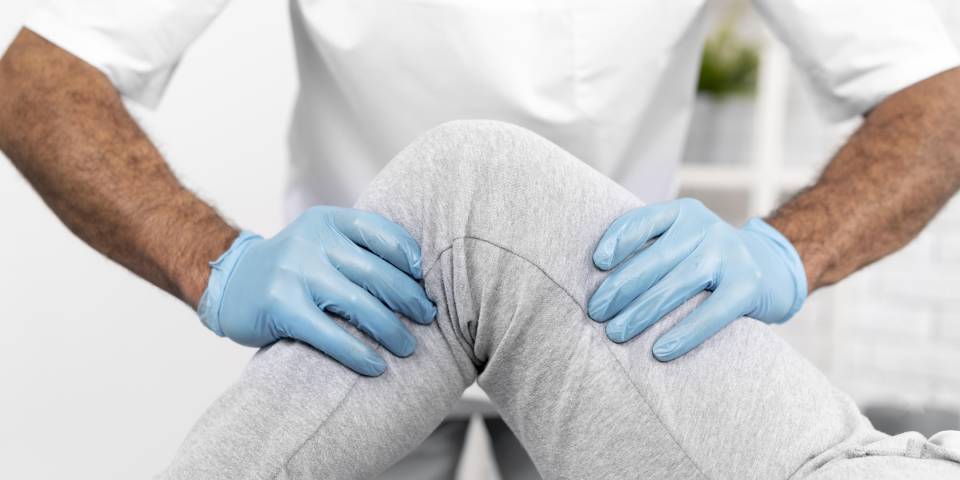- 19/04/2023
- by Dr. Ankur Kumar
- Latest Blog
Joint replacement surgery is a life-changing process that helps individuals suffering from chronic joint pain and mobility issues caused by conditions like arthritis, osteoporosis, or injuries. The surgery concerns replacing the damaged joint with an artificial one, which can enhance the patient’s mobility and quality of life. Whether you’ve undergone a hip, shoulder, or knee replacement, physiotherapy is an essential part of the post-surgical recovery process.
However, the success of the surgery doesn’t just rely on the surgical procedure but also on postoperative care, specifically physiotherapy. Physiotherapy, also known as physical therapy, involves the use of targeted workouts and techniques to promote healing, ease pain, and restore movement and function to the affected joint.
This blog, the Best Joint Replacement Surgeon in PCMC, Pune explores why physiotherapy is important after joint replacement surgery and how it can help patients recover faster.
Reduce Pain and Swelling:
Joint replacement surgery can be painful and cause swelling around the operated area. Physiotherapy can help reduce inflammation and pain. Physiotherapists use a variety of techniques, such as manual therapy and ultrasound, to help reduce inflammation and alleviate pain. In addition, specific exercises can help reduce joint stiffness and improve mobility, which can also help reduce swelling and pain.
Prevent Blood Clots:
After surgery, patients are at a higher risk of forming blood clots, especially in the legs. These blood clots can be dangerous and lead to more severe difficulties like a pulmonary embolism. Physiotherapy can help prevent blood clots by promoting the patient to perform exercises that improve blood flow to the legs. These exercises can include ankle pumps, heel slides, and leg raises.
Improve Range of Motion:
Patients may experience limited mobility after joint replacement surgery due to pain and swelling. Physiotherapy can help improve the patient’s range of motion by providing mild exercises that focus on stretching and strengthening the muscles around the operated area. The physiotherapist may use a mixture of exercises, massage, and hot/cold therapy to help patients recover their mobility.
Improve Quality of Life:
Joint replacement surgery can have a significant effect on a patient’s quality of life. Physiotherapy can help patients return to their daily activities, improve their mental health, and increase their overall well-being. By reducing pain, improving mobility, and speeding up the recovery process, physiotherapy can help patients regain their confidence and independence. In addition, physiotherapy can help control future injuries or joint deterioration, allowing you to keep an active and healthy lifestyle.
Prevents complications:
Joint replacement surgery holds some risks, including the risk of blood clots, infection, and other complications. Physiotherapy can assist prevent these complications by stimulating circulation, improving lung function, and controlling muscle atrophy. In addition, physiotherapy can help identify potential issues early on, allowing for immediate treatment and management.
Promotes healing:
After joint replacement surgery, your body requires time to heal and recover. Physiotherapy can help stimulate healing by improving blood flow to the affected joint and surrounding muscles, which can speed up the healing process. In addition, physiotherapy exercises can help strengthen the muscles around the joint, which can provide extra support and strength.
Speeds up recovery:
Physiotherapy assists to speed up the recovery process by encouraging patients to exercise and move their joints. Physiotherapists can develop personalized rehabilitation strategies that are tailored to each patient’s specific needs, allowing them to regain strength and mobility faster.
What happens if you don't get physiotherapy after joint replacement?
If you do not get physiotherapy after joint replacement surgery, several things can happen:
- Stiffness: Without proper physiotherapy, your joint may become stiff and less mobile, which can make it difficult to perform everyday tasks and activities.
- Increased pain: If you don’t obtain physiotherapy after joint replacement, you may experience more pain and discomfort than if you had done the therapy. This can lead to difficulty sleeping and reduced quality of life.
- Muscle Weakness: If you do not engage in typical exercises to strengthen the muscles near the joint, you may experience muscle weakness, which can lead to further joint instability and potential injury.
- Delayed recovery: Without physiotherapy, it may take longer to heal after joint replacement surgery, extending the rehabilitation process and impacting your overall recovery.
- Scar tissue formation: Scar tissue can form around the joint if you don’t move it regularly, making it even more challenging to regain mobility.
- Infection: Physiotherapy helps to decrease the risk of infection by keeping the wound clean and stimulating blood flow to the affected area. Without physiotherapy, you may be at a higher risk of developing an infection after joint replacement surgery.
Conclusion:
Physiotherapy is essential after joint replacement surgery. It can help patients reduce pain and swelling, prevent blood clots, improve range of motion, speed up recovery, and improve the overall quality of life, physiotherapy can help you get back to the activities you love. If you are planning to undergo joint replacement surgery, it is important to discuss your physiotherapy options with Dr. Ankur Kumar, Best Orthopedic Surgeon in PCMC, Pune to ensure a successful recovery.



